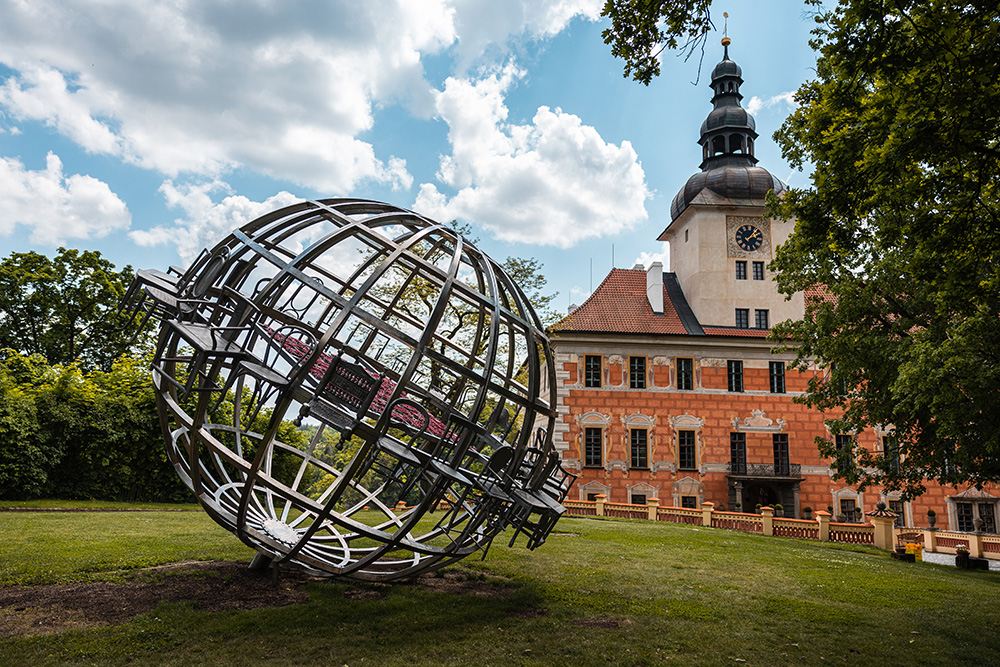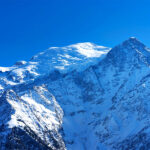Scientific research has shown that viewing art can have a profound effect on our neural connections. Our brains release dopamine, the “feel good” neurotransmitter, when we look at works of art that resonate with our emotions. That is why art – in addition to reflection and development – gives those who contemplate it a sense of satisfaction, reduces stress and anxiety.
The process of creating or viewing art can also stimulate the release of endorphins, which are natural mood enhancers. This explains why spending time in art galleries or in the creative process can have a therapeutic and calming effect. Throughout history, art has served as a means of self-expression, communication and cultural preservation: from cave paintings tens of thousands of years old to contemporary works that challenge social norms, it is a reflection of the common human experience and a way of understanding and accepting reality.
El Anatsui
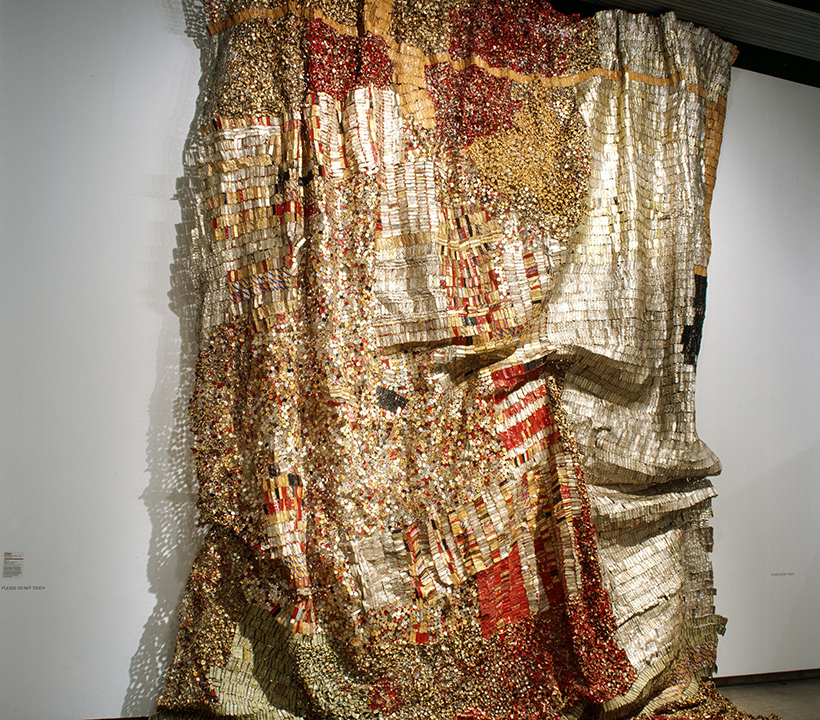
Photo: El Anatsui, «Sasa», Source: https://elanatsui.art
El Anatsui is a Ghanaian artist who has made a significant mark on the global art scene with his innovative and thought-provoking creations. El Anatsui’s journey into the world of art began in his native Ghana.
A turning point in the artist’s life came in 1975. He moved to Nigeria to teach at the University of Nsukka. There, Anatsui immersed himself in the study of Nigeria’s rich artistic traditions, which would later occupy a key place in his artistic language. El Anatsui is renowned for his ability to transform everyday materials into extraordinary works of art. One of his most iconic and innovative series is his work with discarded liquor bottle caps, which he meticulously assembles into large, dazzling paintings. As well as being visually stunning, these works carry a profound message about over-consumption, pollution and the relationship between the local and the global.
One of El Anatsui’s largest projects is the sculpture Broken Bridge II, a monumental work that graces the entrance to the High Line in New York.
Another of the artist’s iconic works that attracted international attention was his collaboration with the Cape Town Opera. He designed a stage curtain made of aluminium and copper wire, which served as a backdrop for performances and captivated audiences.
Simone Leigh

Photo: Simone Leigh, Exhibition – «Loophole of Retreat», Source: https://www.guggenheim.org
Simone Leigh is an American artist whose profound artistry and unique ability to weave cultural narratives into her work has not only won her critical acclaim, but also the hearts of art lovers around the world.
Simone Leigh’s art is an exploration of identity, race, gender and the intersection of these. She has a talent for infusing her sculptures with deep symbolism, making them a powerful medium for conveying messages.
Leigh’s solo exhibition at the Guggenheim Museum in 2019 was the artist’s passport to the world of cultural trendsetters. The striking sculptures, full of intricate detail and powerful symbolism, were exceptionally well received by visitors.
Simone Leigh’s contribution to the art world has not gone unnoticed. Throughout her career she has received numerous awards and honours, cementing her status as a leading figure in contemporary sculpture. Today, her works grace the halls of prestigious institutions and captivate audiences around the world.
Oleksandr Roitburd
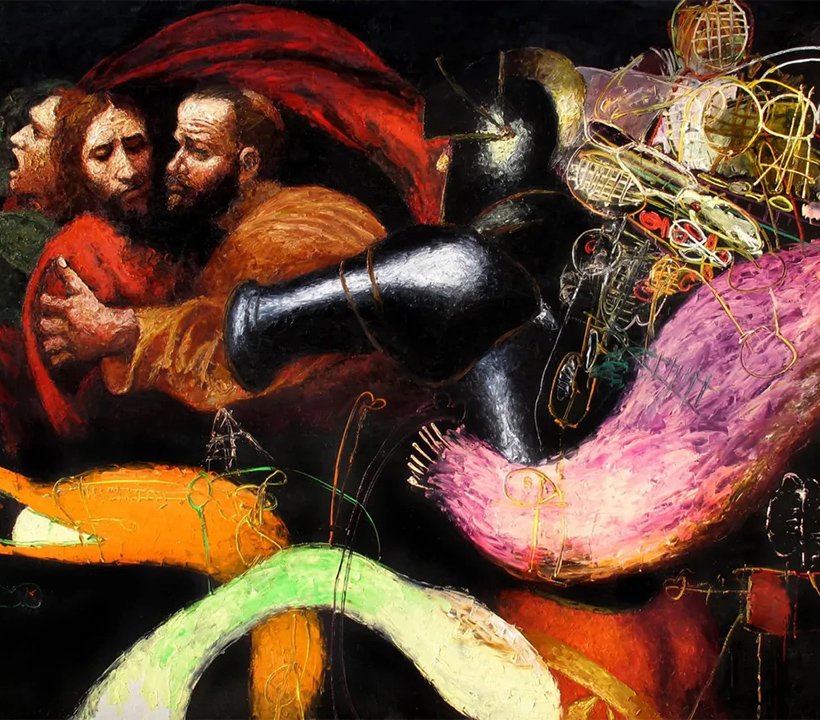
Photo: Olexandr Roitburd, “Goodbye Caravaggio”, Source: https://kyiv.gallery
Oleksandr Roitburd is a Ukrainian artist born in the south of Ukraine – in the legendary city of Odesa on the Black Sea. As a result, during his formative years, Roitburd was deeply influenced by the multicultural environment of the Ukrainian Black Sea region and Odesa, known for its rich history and vibrant cultural life.
Roitburd’s art is an intertwining of styles, a combination of modern and traditional, East and West. His work often defies classification, transcending any one genre or artistic movement. In essence, Roitburd’s art reflects a deep understanding of the human condition, the complexities of existence and the constant evolution of culture and society.
Interestingly, Roitburd’s art often includes elements of surrealism, blurring the line between reality and imagination. His most striking works are “Farewell, Caravaggio!”, “Lao Tzu, Confucius and The Frog” and “Rembrandt”. Roitburd’s works adorn the walls of major exhibitions and galleries across the world.
Wolfgang Tillmans

Photo: Wolfgang Tillmans, Exhibition – «To look without fear», Source: https://www.crousel.com
Born on 16 August 1968 in Remscheid, Germany, Wolfgang Tillmans developed an early fascination with the visual world. His work is based on a personal exploration of the world around him, and his photographs often straddle the line between documentary and art, challenging conventional boundaries and preconceptions.
Tillmans’ career took off as he immersed himself in the vibrant art scene of 1990s London. His outspoken and unconventional photographic style attracted the attention of art lovers and critics alike. Wolfgang Tillmans became a star in 2000 when he became the first non-British photographer to win the prestigious Turner Prize. This made Tillmans an international art sensation.
The artist’s creative career has been marked by numerous awards, major exhibitions and innovative projects admired by critics and connoisseurs around the world. His work has been exhibited in the world’s most prestigious venues, including the Tate Modern in London, the Museum of Modern Art (MoMA) in New York and the Centre Pompidou in Paris. These exhibitions have attracted large audiences and sparked critical debate about Tillmans’ innovative approach to photography.
Damien Hirst
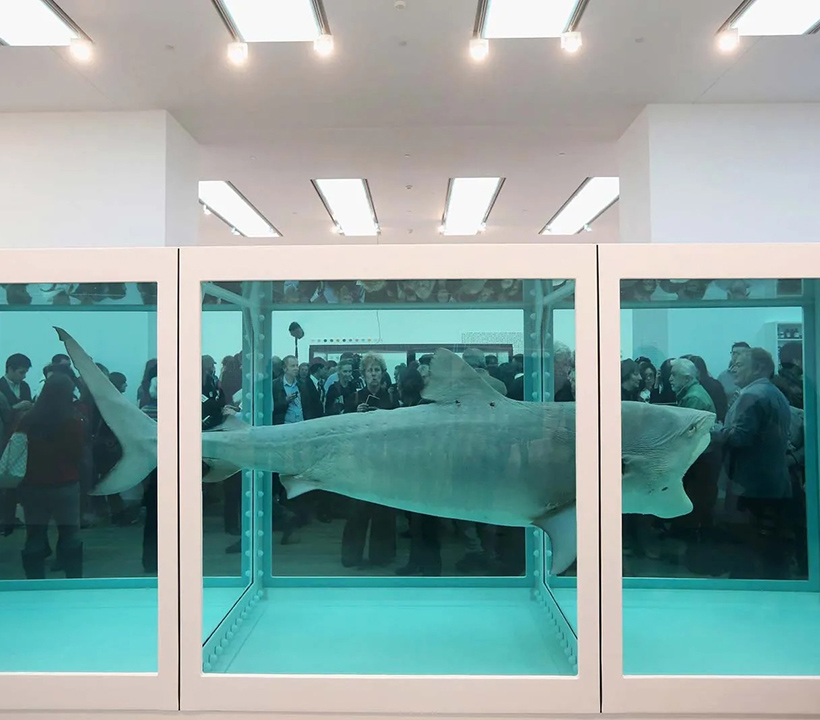
Photo: Wolfgang Tillmans, Exhibition – «To look without fear», Source: https://www.crousel.com
Born on 7 June 1965 in Bristol, England, Damien Hirst has had an aptitude for art since childhood. His early fascination with the natural world and its inherent mysteries laid the foundations for his future work. His upbringing in Leeds and subsequent studies at Goldsmiths, University of London, placed him at the centre of the Young British Artists movement in the late 1980s and early 1990s. Hirst’s art is characterised by a bold and unconventional approach. A shocking sensation was Hirst’s Natural History series, which featured preserved animals such as sharks, cows and sheep immersed in formaldehyde. This bold exploration of life and death challenged traditional notions of art, sparking both admiration and controversy.
***
Contemporary art evolves along with public discourse, each time raising new, relevant issues and searching for new, unique techniques and tools.
Source: The Gaze


